Lasvit’s little glass monsters win the prestigious Milano Design Award at Salone del Mobile
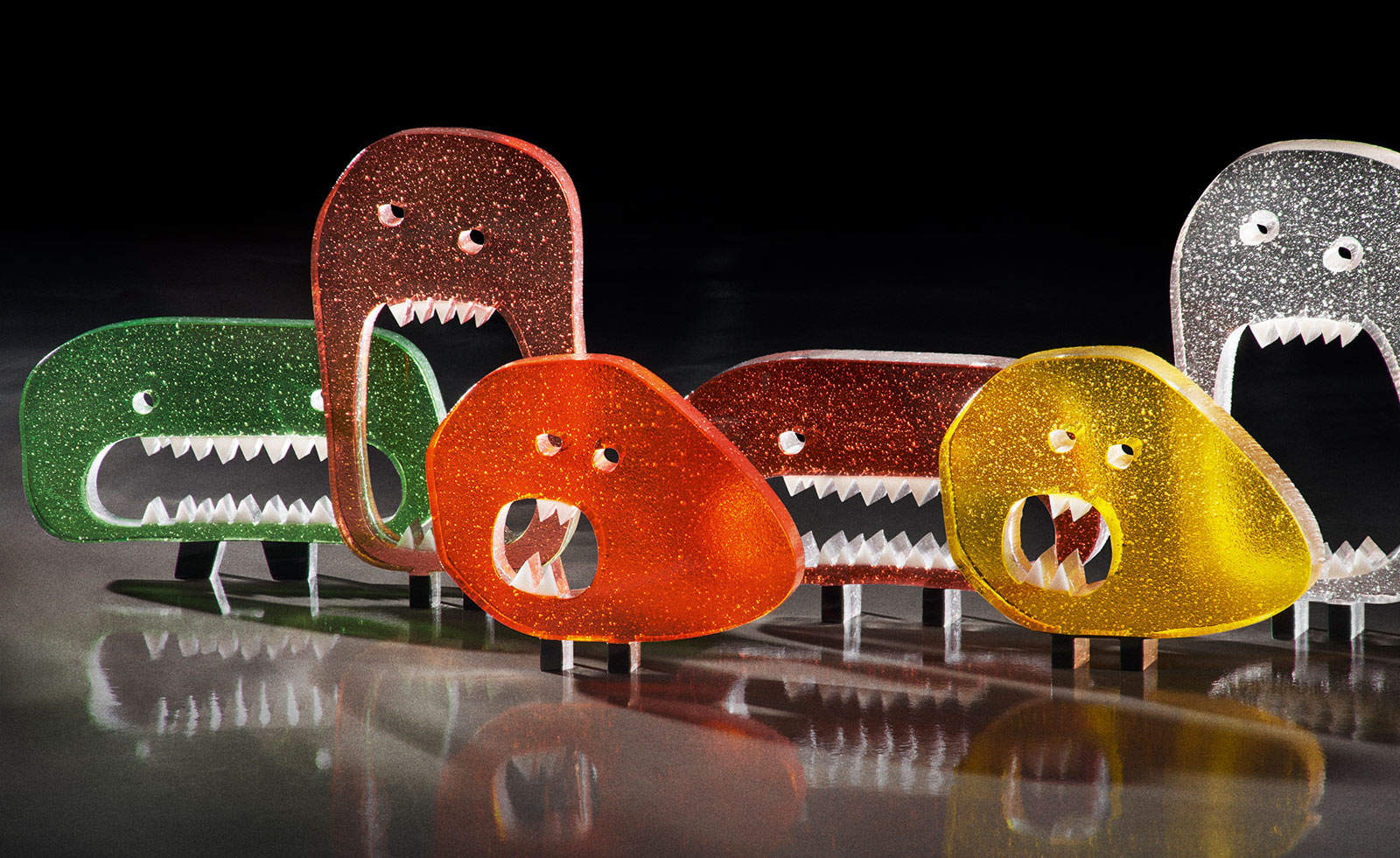
One minute: that’s how long it takes to create a monster. ‘I don’t recall ever being fearful of monsters as a child, so my design is childishly simple: I started with a doodle,’ says Dutch designer Maarten Baas, one of 16 creatives asked to think monstrous by the Czech glass manufacturer Lasvit. Transforming those dark imaginings into Bohemian glass, however, has taken almost two years. The project is finally unveiled at Salone del Mobile in Milan’s Teatro Gerolamo, a neoclassical puppet theatre, where it has been awarded the prestigious Milano Design Award for best installation, interpreting a contemporary design and a future conceptual vision.
Conceived by creative design strategist Stephan Hamel and Lasvit founder Leon Jakimič, the project has delivered a diverse family of monsters, from a mirror encrusted with googly eyes by the Paris-based couturier Maurizio Galante to a menacing stained-glass portrait by octogenarian artist Vladimír Kopecký. Eight of the pieces will be limited editions, Kopecký’s will be a one-off, while others will be more widely available. All form the Lasvit Monster collection, which will be updated each year with contributions from new artists.
‘Every culture and individual perceives the concept of “monster” differently,’ says Jakimič. ‘They frighten us, but also open up our minds, reminding us of our own limitations and inner fears. The question of what a monster really is becomes real through these artworks.’
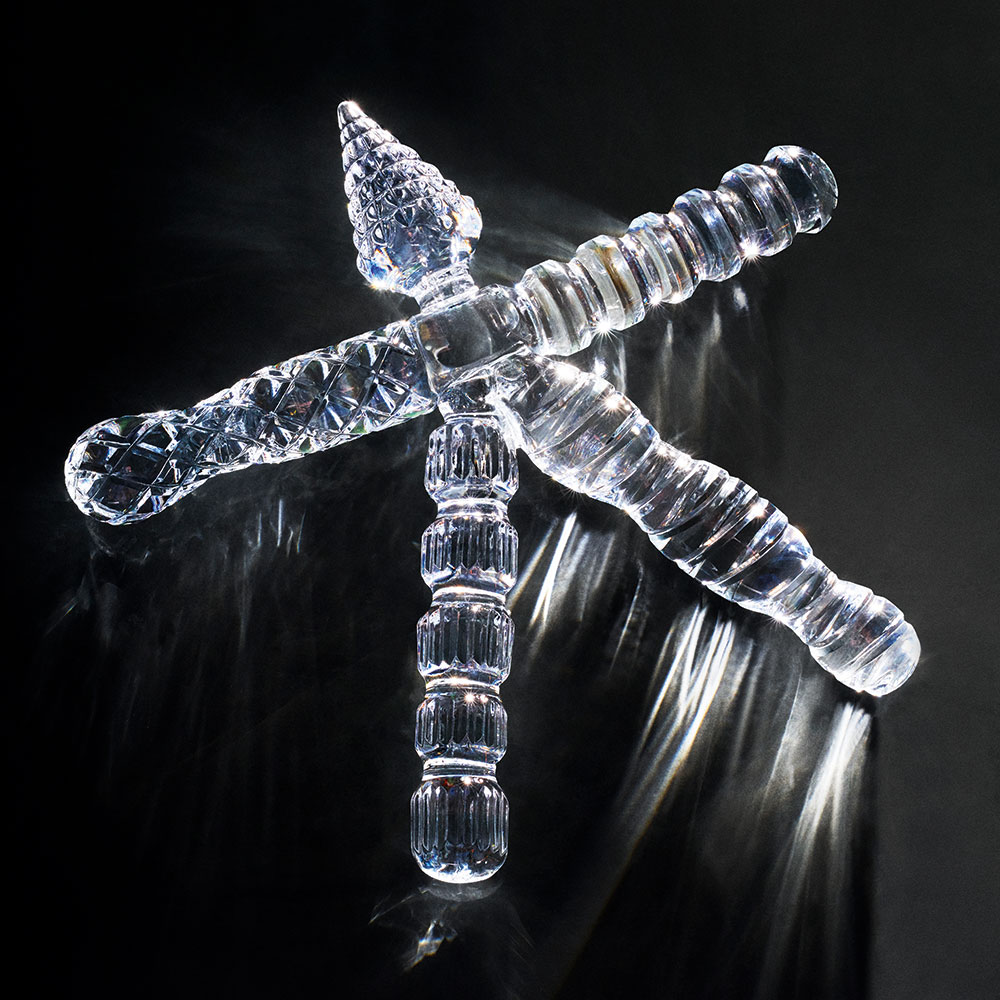
‘Toyboy’, by Fabio Novembre. Inspired by da Vinci’s Vitruvian Man, with an indiscreet nod to sex toys, this all 28cm object is a ‘little friend of monstrous proportions’
The pieces, made in four of Lasvit’s workshops in the Czech Republic, employed both traditional and groundbreaking techniques including hand-blown, cast, fused and cut glass. Some pieces were even made using uranium, which adds a unique gleaming green. ‘It’s not radioactive,’ Jakimič laughs, ‘but we asked someone from the atomic agency to literally add one drop to the molten glass to create the effect.’
Daniel Libeskind’s offering called for a complex process, adding glass chips into a mould, increasing its temperature by a few degrees every day over a few months before cooling it down at a similarly gradual pace. ‘As an architect, I always start to design with a drawing,’ says Libeskind. ‘But in this case, I sat down at a table with a bucket of clay and a kitchen knife. And I just began to sculpt.’ To translate the clay monsters into glass, ‘we used a super-sophisticated Bohemian technique invented during socialism’, says Jakimič. ‘It’s the first time we’ve used it for a product.’ It gives the pieces an unusual luminosity and a colour that changes depending on the light.
Glass artist Stanislav Müller also pushed the boundaries, exploring the properties of optical glass with his geometric monster. ‘Production must be perfect,’ he explains. ‘Each piece of glass is cut by hand from one block of optical glass to avoid unwanted refraction.’ The artist engraved and ground details onto the faces. ‘It looks simple, but was a challenge.’
Baas’ whimsical contribution draws inspiration from an imaginary discovery of fossils of small beasts, with sharp teeth but no stomachs, while Italian architect Fabio Novembre looked to Leonardo da Vinci’s Vitruvian Man for ‘Toyboy’, slyly subverting it with body parts vaguely resembling sex toys.
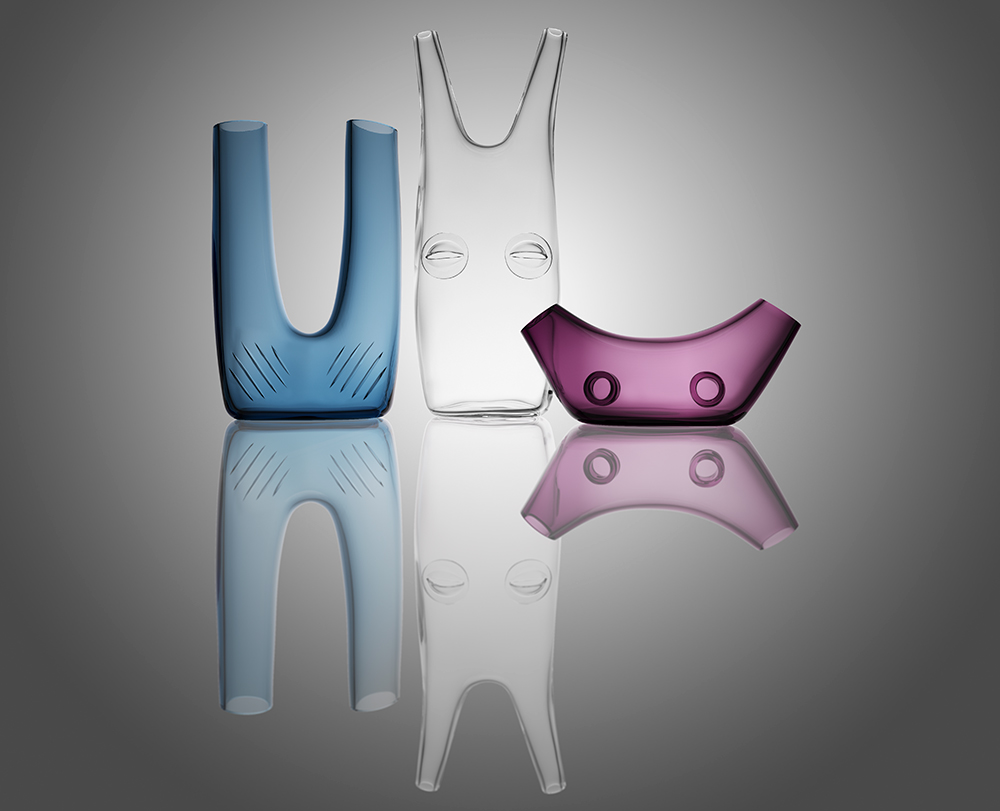
Render of Yabu Pushelberg’s design that draws on Japanese folklore
As for Canadian design duo Yabu Pushelberg, they veered away from a literal interpretation to draw on Japanese folklore. Their designs nod to tsukumogami, household objects that are said to transform into spirits after a century of use. ‘They are sometimes described as vengeful, but also as simply mischievous. Either way, they are an ancient representation infused with the soul of a material culture,’ says Glenn Pushelberg of their three animal head-shaped vessels. ‘Maintaining a playfulness, but also a slightly sinister, mischievous undercurrent to each piece was the greatest challenge.’
The project is an important way of showing young, innovative designers the potential of working with glass artisans. But it proved equally enticing for the 96-year-old Czech glass artist René Roubíček, who shaped molten glass by hand at the furnace to create an organic form named ‘The Martian’. ‘The monster could only be like this; playful and merry, provoking solely by the surprising simplicity of its elements,’ he says.
Another venerable talent, Italian designer Alessandro Mendini, believes the time is right to think about monstrosities: ‘Designing monsters means being able to vanquish them.’ His designs are intended to appear kind and friendly. ‘I think all the objects I make are a bit like monsters: it is a kind of creature that arouses special fascination,’ he says. ‘But in my case, the monster is a good-luck charm.’ Equally amiable are the Campanas’ ‘Outer Space Monsters’, named Flix and Flex. ‘Our monsters are like aliens with a human shape inside. They are not ugly or terrifying. We see more horrible things in daily life,’ says Fernando Campana.
One of the most intriguing pieces in the collection, ‘Something Underneath’ by Japanese designer Oki Sato of Nendo, is almost invisible. It looks as if a leaf of paper or cloth were draped over a menacing shape, ‘playing with the idea of the unknown and the invisible’. Each piece called for a large single sheet of glass, its week-long cooling process meticulously controlled to reduce the risk of breakage. ‘It is such a simple idea, yet so sophisticated,’ Jakimič observes.
According to Lasvit’s art director, Maxim Velčovský, however, the true value of the exploration of monsters is that it offers a unique glimpse into the world of the designer. Velčovský’s own creation is a Lenin lookalike with a slightly larger left hand and shoe. Titled ‘Leftism’, it reflects his experience of growing up behind the Iron Curtain. ‘It’s a deformation that is not immediately obvious, but that you figure out later on,’ he explains. ‘We were influenced by the idea of building up the socialist camp, and although the idea may be good, the results can be monstrous. It really affected my life and so it has become my personal monster.’
As originally featured in the May 2018 issue of Wallpaper* (W*230)
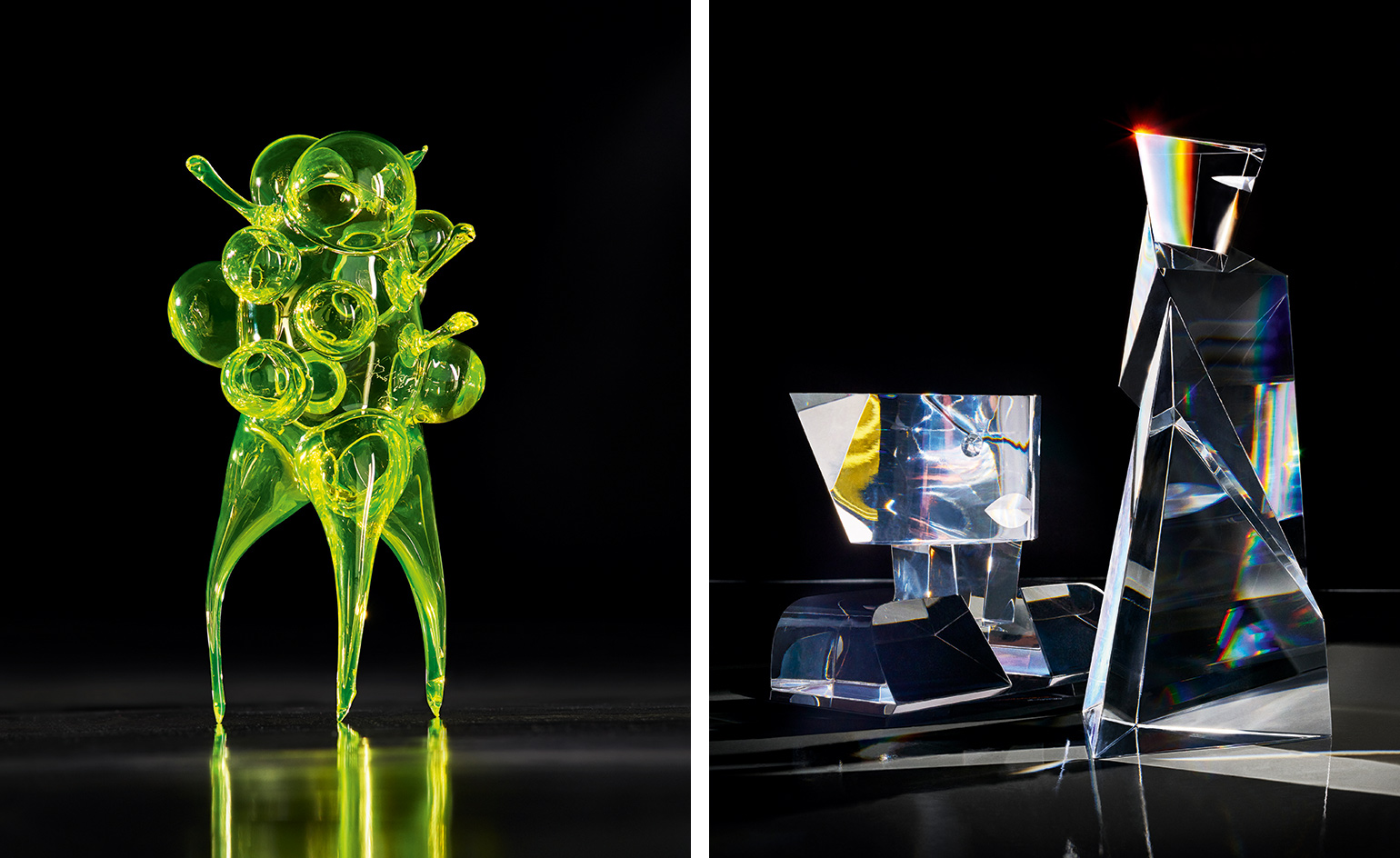
Left, ‘The Martian’, by René Roubíček. The doyen of Czech glassmaking, Roubíček created a hand-blown alien figure, glowing green thanks to a drop of uranium. Right, ‘Manabi Monsters’, by Stanislav Müller. Czech glass artist Müller’s Japanese-influenced monsters are cut from blocks of optical glass, their parts ground, polishes and then assembled
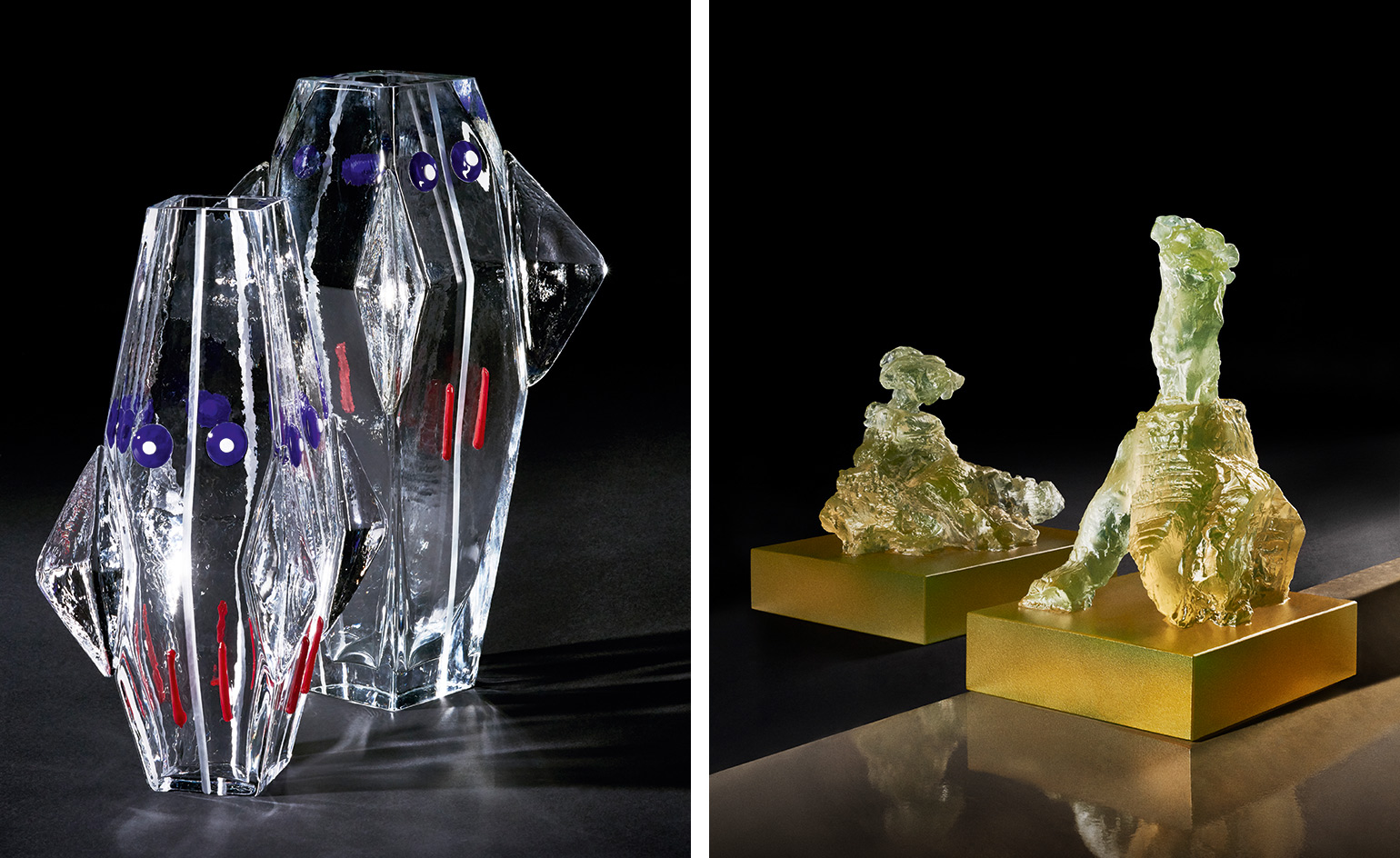
Left, ‘Rombo, 2’, by Alessandro Mendini. Mendini chose to design friendly monsters, made of hand-blown glass using an iron mould. Right, ‘Rosencrantz and Guildenstern’, by Daniel Libeskind. A special salt oxide causes these fused-glass monsters to change colour, from green to brown, depending on the light
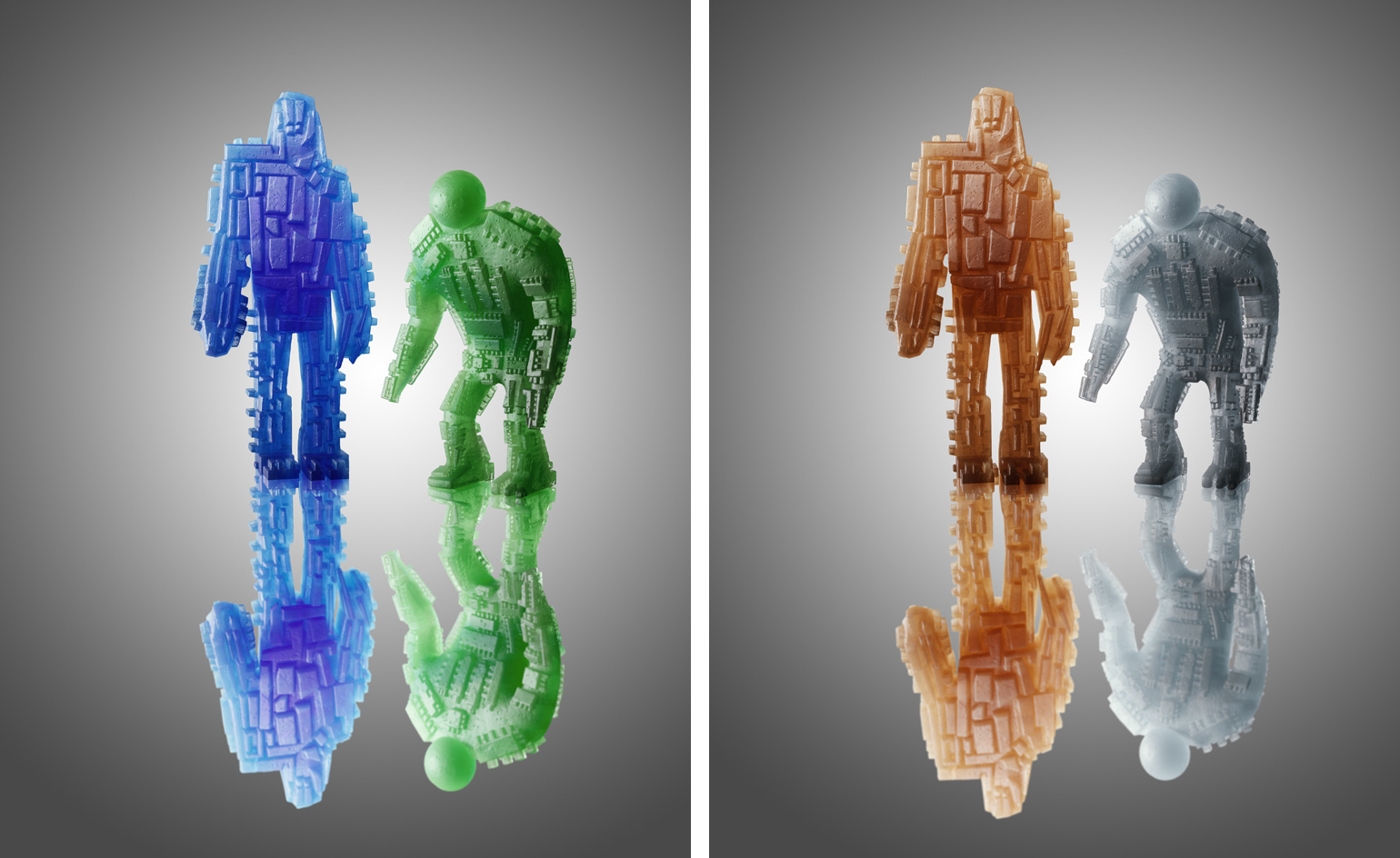
Renders of the Campana brothers’ ‘Outer Space Monsters’, named Flix and Flex
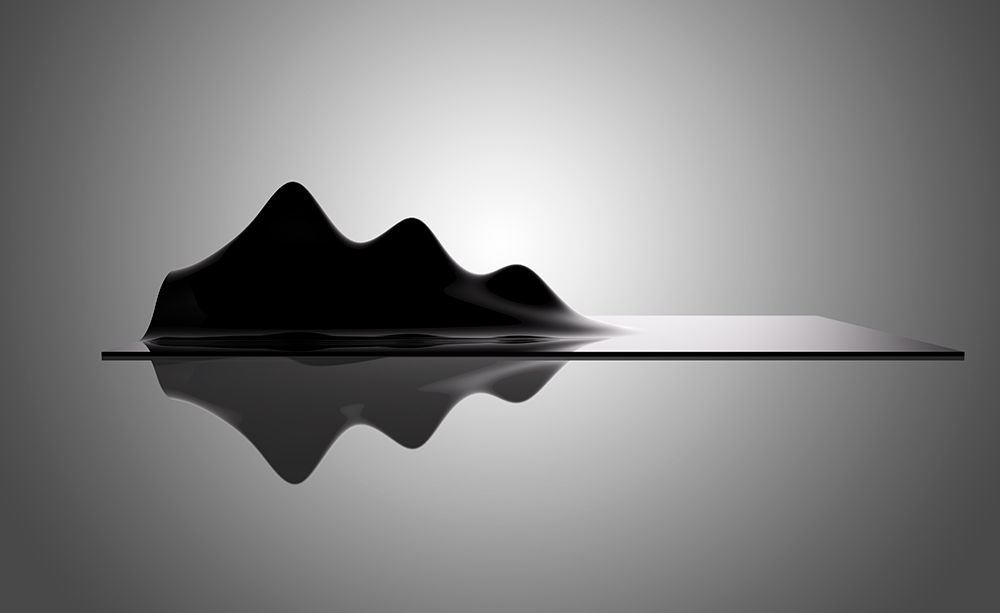
Render of ‘Something Underneath’ by Japanese designer Oki Sato of Nendo
INFORMATION
‘Lasvit Monster Cabaret’ is on view at Teatro Gerolamo from 17 – 22 April during Salone Del Mobile. For more information, visit the Lasvit website
ADDRESS
Teatro Gerolamo
8 Piazza Cesare Beccaria
20122
Milan
Wallpaper* Newsletter
Receive our daily digest of inspiration, escapism and design stories from around the world direct to your inbox.
Catherine Shaw is a writer, editor and consultant specialising in architecture and design. She has written and contributed to over ten books, including award-winning monographs on art collector and designer Alan Chan, and on architect William Lim's Asian design philosophy. She has also authored books on architect André Fu, on Turkish interior designer Zeynep Fadıllıoğlu, and on Beijing-based OPEN Architecture's most significant cultural projects across China.
-
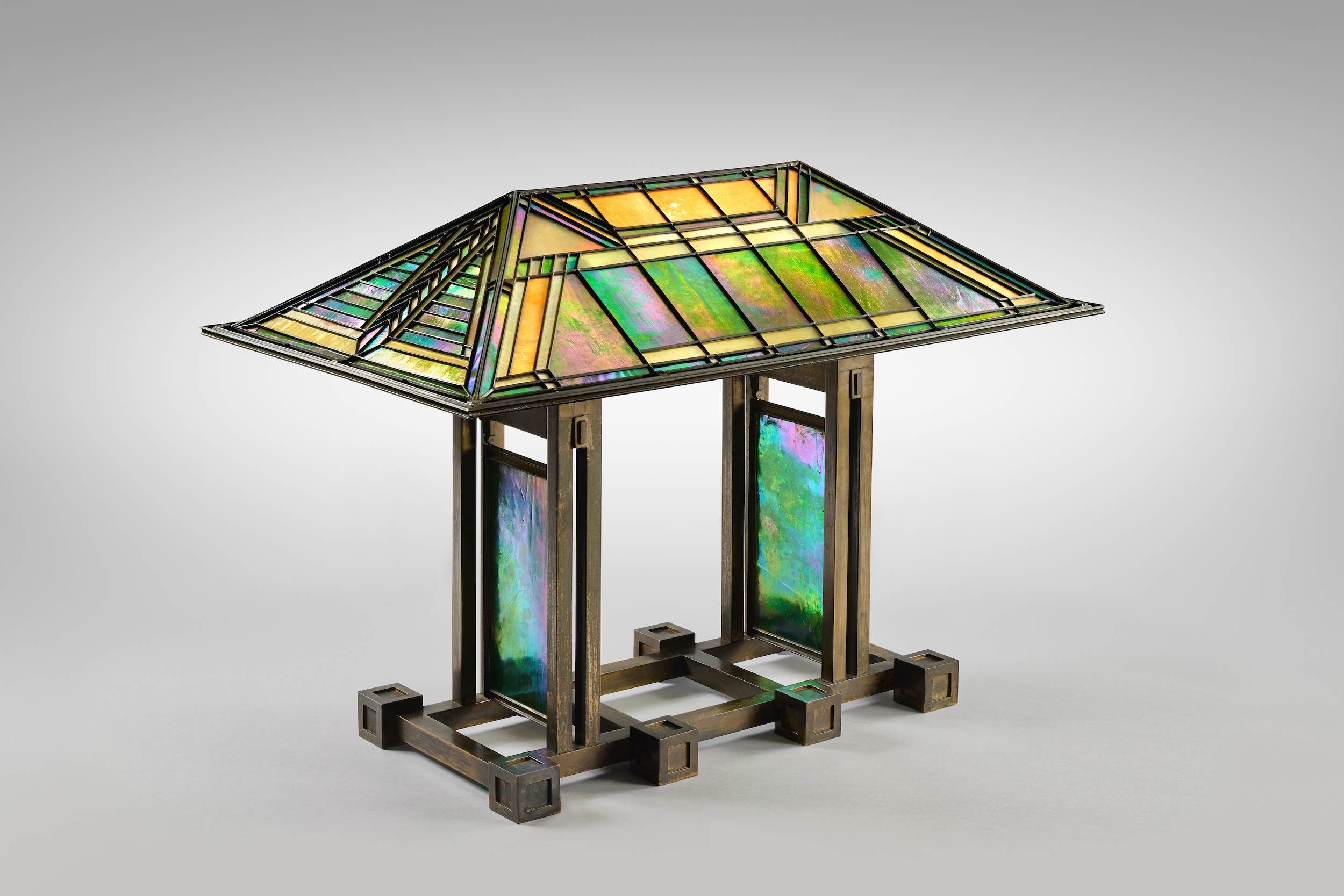 Sotheby’s is auctioning a rare Frank Lloyd Wright lamp – and it could fetch $5 million
Sotheby’s is auctioning a rare Frank Lloyd Wright lamp – and it could fetch $5 millionThe architect's ‘Double-Pedestal’ lamp, which was designed for the Dana House in 1903, is hitting the auction block 13 May at Sotheby's.
By Anna Solomon
-
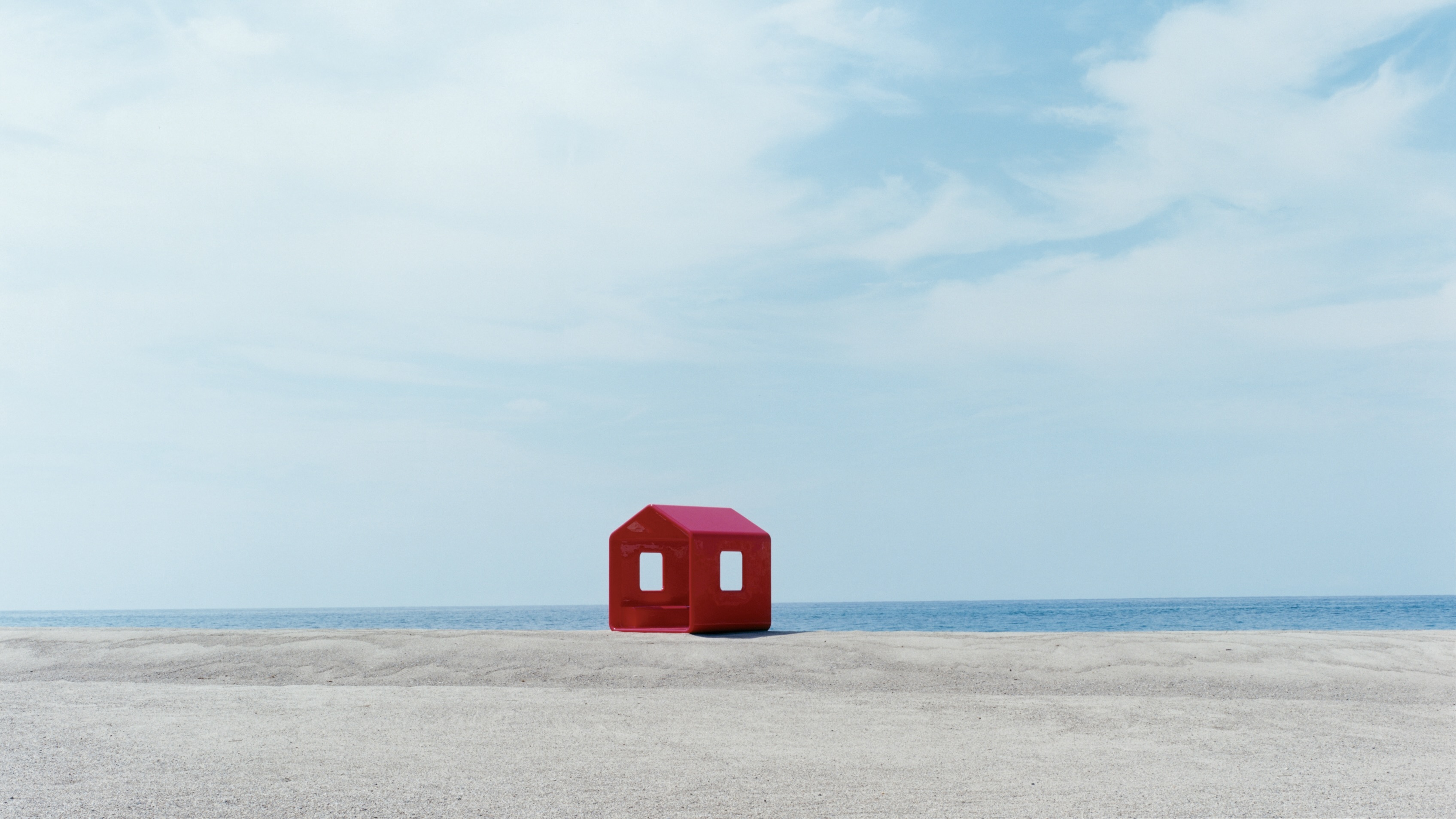 Naoto Fukasawa sparks children’s imaginations with play sculptures
Naoto Fukasawa sparks children’s imaginations with play sculpturesThe Japanese designer creates an intuitive series of bold play sculptures, designed to spark children’s desire to play without thinking
By Danielle Demetriou
-
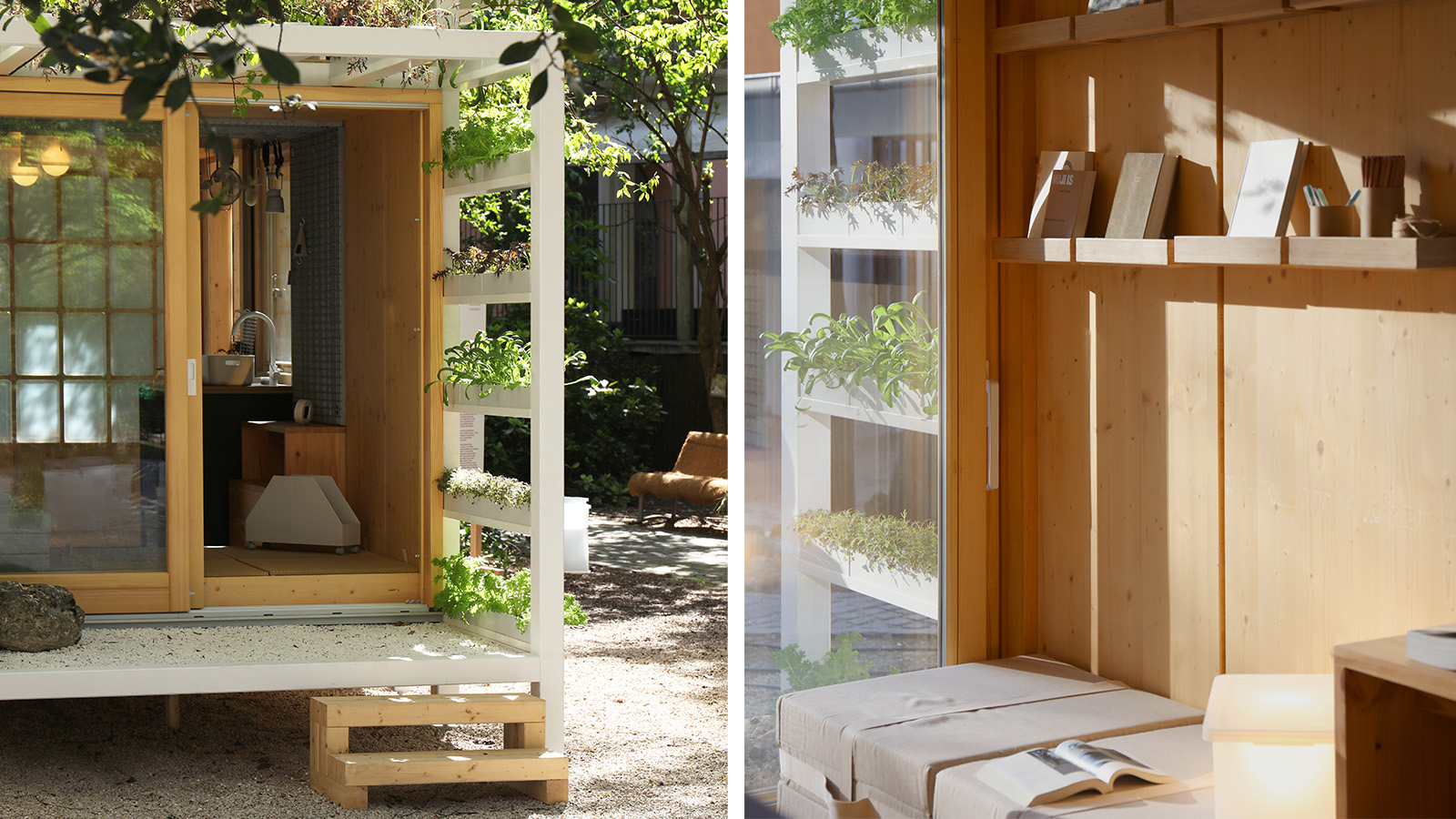 Japan in Milan! See the highlights of Japanese design at Milan Design Week 2025
Japan in Milan! See the highlights of Japanese design at Milan Design Week 2025At Milan Design Week 2025 Japanese craftsmanship was a front runner with an array of projects in the spotlight. Here are some of our highlights
By Danielle Demetriou
-
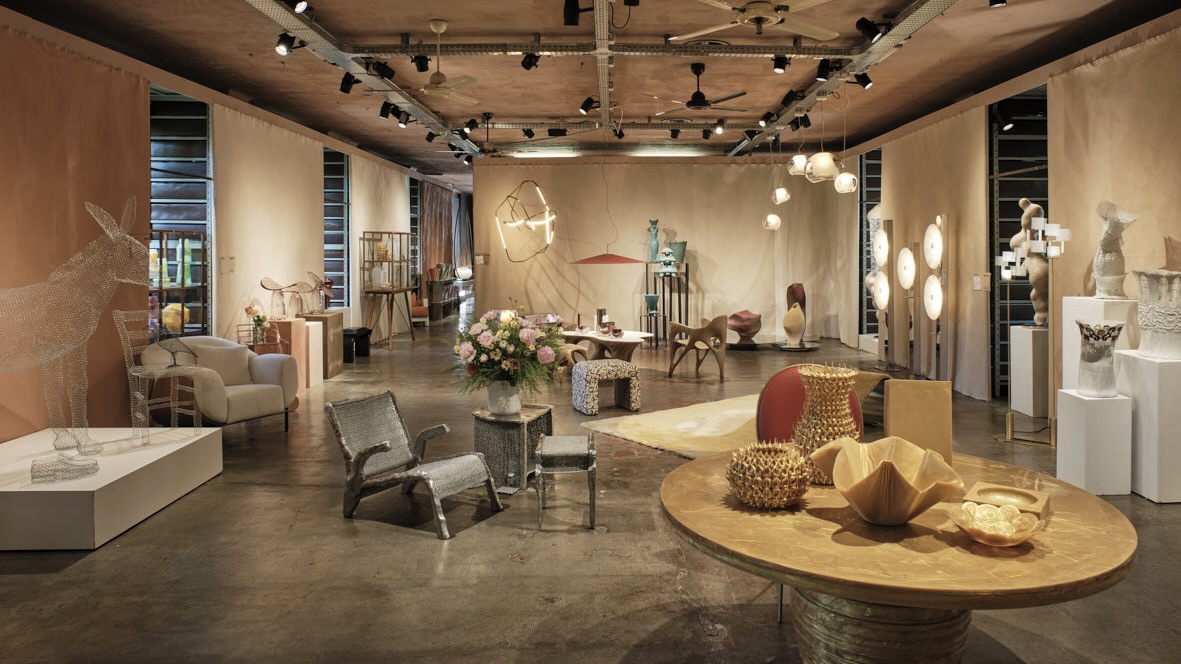 Eight designers to know from Rossana Orlandi Gallery’s Milan Design Week 2025 exhibition
Eight designers to know from Rossana Orlandi Gallery’s Milan Design Week 2025 exhibitionWallpaper’s highlights from the mega-exhibition at Rossana Orlandi Gallery include some of the most compelling names in design today
By Anna Solomon
-
 Bentley’s new home collections bring the ‘potency’ of its cars to Milan Design Week
Bentley’s new home collections bring the ‘potency’ of its cars to Milan Design WeekNew furniture, accessories and picnic pieces from Bentley Home take cues from the bold lines and smooth curves of Bentley Motors
By Anna Solomon
-
 StoneX partners with Wallpaper* for material alchemy at Milan Design Week and beyond
StoneX partners with Wallpaper* for material alchemy at Milan Design Week and beyondThe natural stone purveyor teams up with Wallpaper* for a three-year partnership of material adventures, starting with an exhibition at Triennale di Milano
By Simon Mills
-
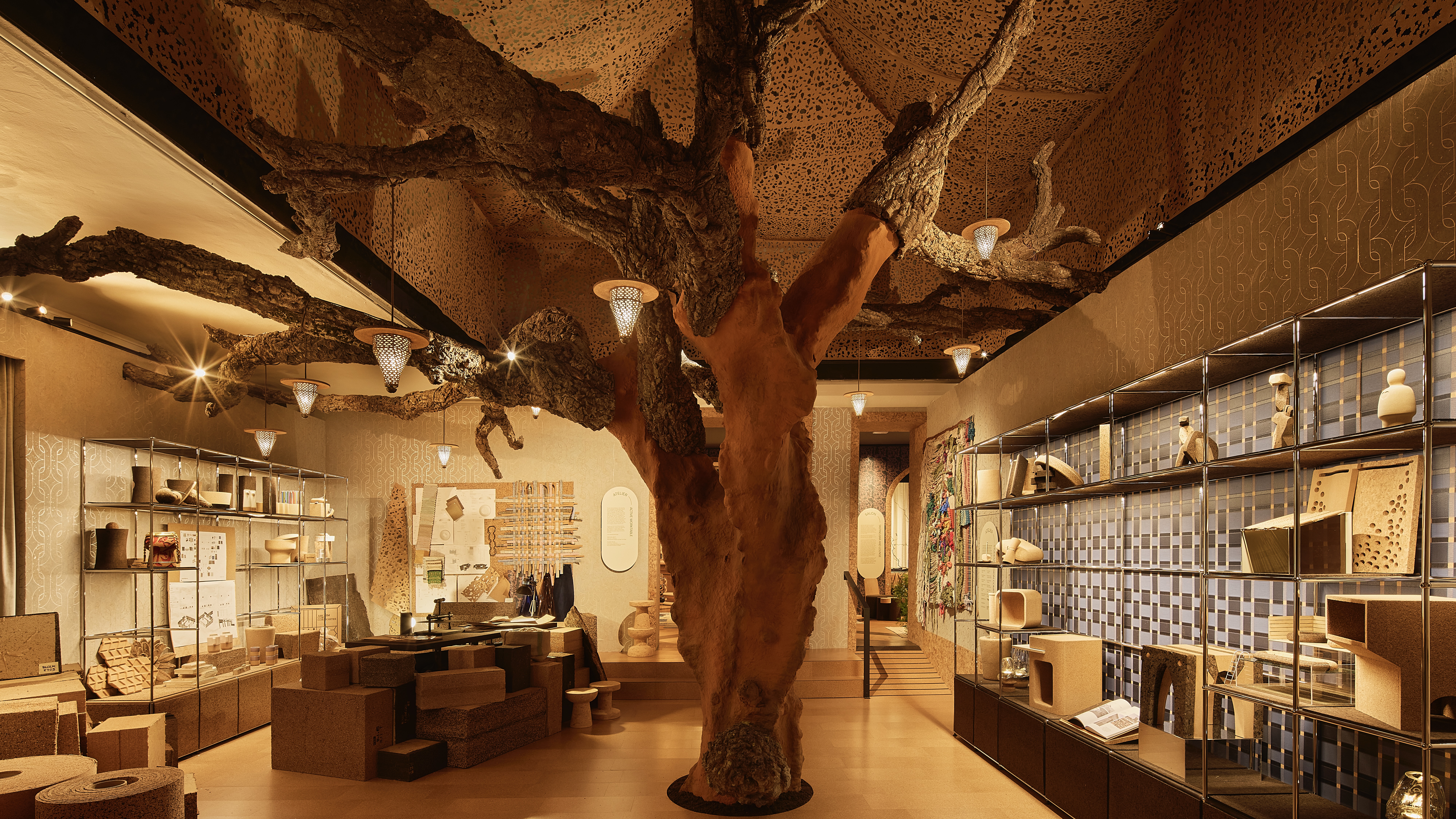 David Rockwell’s Milan Design Week presentation is a love letter to cork
David Rockwell’s Milan Design Week presentation is a love letter to corkRockwell Group’s Casa Cork installation showcases this under-appreciated material, which is infinitely recyclable and sequesters carbon for decades
By Anna Solomon
-
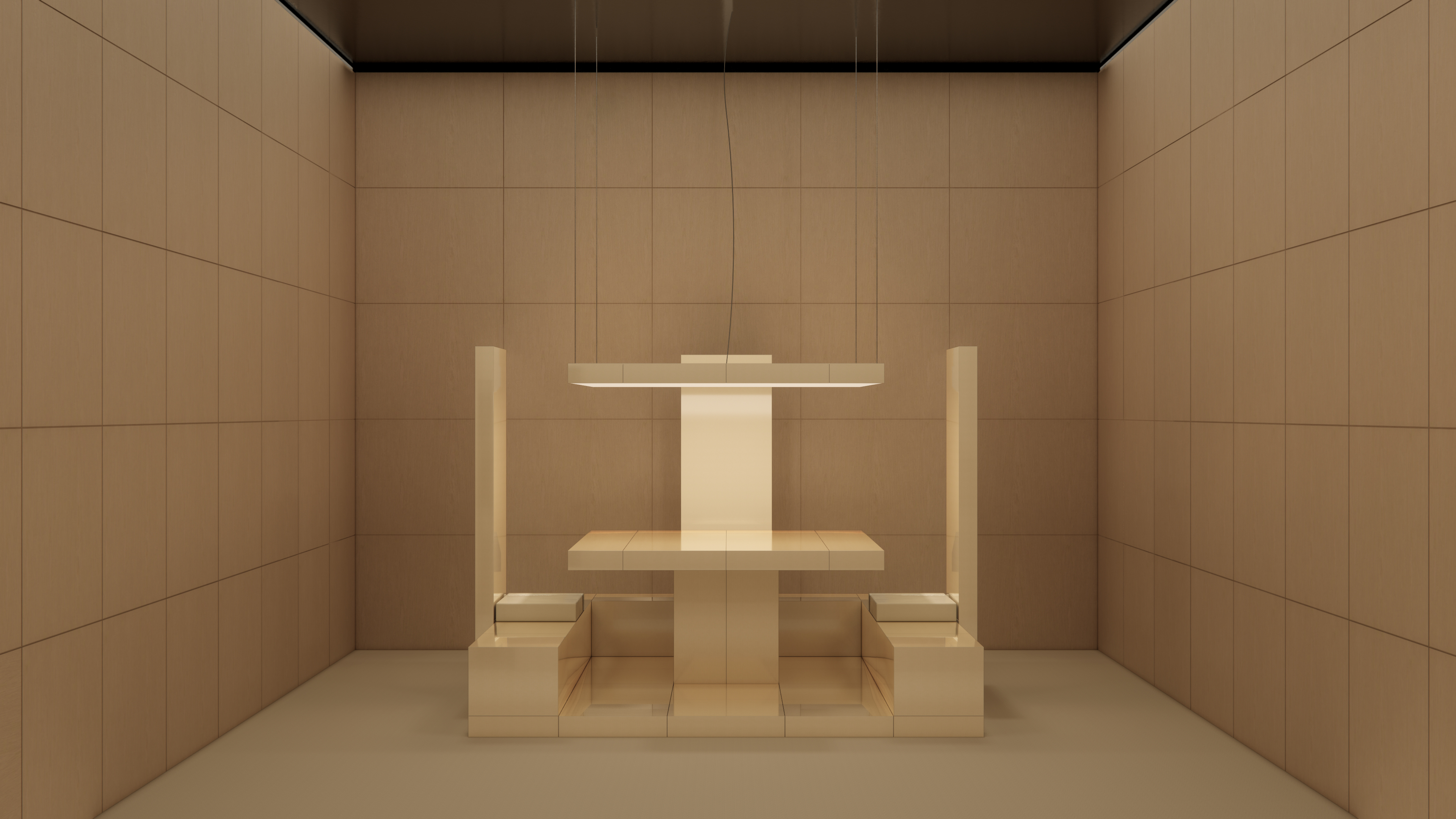 Emerging galleries to discover during Milan Design Week
Emerging galleries to discover during Milan Design WeekWallpaper’s Milan editor has the inside track on the younger design galleries coming to town
By Laura May Todd
-
 Buccellati brings the forest and Furry Animals to Milan Design Week
Buccellati brings the forest and Furry Animals to Milan Design WeekThe jewellery and silverware maison falls back on tradition for its Milan showcase, presenting its now-emblematic collection of intricately crafted creatures
By Laura May Todd
-
 Where next for Salone del Mobile? Maria Porro on the future of the world’s biggest furniture fair
Where next for Salone del Mobile? Maria Porro on the future of the world’s biggest furniture fairAhead of Salone del Mobile 2025 in Milan, we sit down with its president to talk design, data and forging the event’s future in a fast-changing world
By Hugo Macdonald
-
 What to see at Milan Design Week 2025
What to see at Milan Design Week 2025A guide to some of the events the Wallpaper* team is checking out at Milan Design Week (7–13 April) – from public installations and major launches to standout venues and must-see exhibitions
By Hugo Macdonald